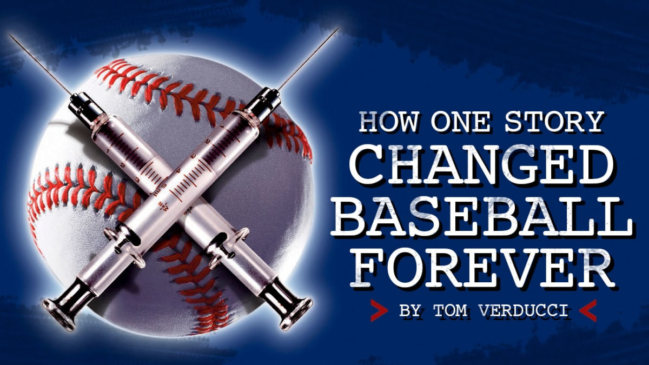
The Simple but Potent Idea That Changed Baseball Forever
Discover the simple but potent idea that revolutionized baseball forever. Explore its origins, impact, and how it continues to shape the game we love today.
Introduction
Baseball, often hailed as America’s pastime, has a rich history filled with legendary players, dramatic moments, and iconic stadiums. However, one simple but potent idea transformed the game forever, elevating it to new strategic heights and deeper fan engagement. This seemingly modest concept reshaped how teams are managed, how games are played, and how fans experience baseball.
The Origin of the Game-Changing Idea
A Humble Beginning
The mid-20th century was a time of innovation and change across many fields, and baseball was no exception. Amidst the tradition-laden landscape of America’s favorite sport, a fresh perspective was introduced by a young economist named Bill James. His revolutionary idea? Sabermetrics—the empirical analysis of baseball through statistics.
Bill James: The Pioneer
Bill James, a self-taught baseball historian and statistician, saw the game differently. Where others saw anecdotal success, Bill James saw patterns and probabilities. His writings in the “Baseball Abstracts” started to catch the attention of those looking for a competitive edge, laying the groundwork for a transformation that would ripple through the entire sport.

Sabermetrics: The Simple but Potent Idea
What is Sabermetrics?
At its core, sabermetrics is the search for objective knowledge about baseball. It aims to answer questions like: How do we measure a player’s true contribution to their team? Which strategies are most effective in winning games? By analyzing vast amounts of data, sabermetrics provides insights that go far beyond traditional stats like batting averages and RBIs.
Key Concepts
Here are some of the key concepts introduced by sabermetrics:
- On-base percentage (OBP): Measures how frequently a batter reaches base.
- Slugging percentage (SLG): Evaluates a player’s power-hitting ability.
- Wins Above Replacement (WAR): Estimates a player’s total contributions to their team compared to a replacement-level player.
- Fielding Independent Pitching (FIP): Focuses on a pitcher’s effectiveness based on events they can control (strikeouts, walks, home runs) rather than defensive plays.
These metrics shifted the focus from traditional, often misleading statistics to more comprehensive evaluations of player performance.
The Impact on Teams
Early Adopters
Initially, many traditionalists scoffed at the sabermetric approach. However, teams like the Oakland Athletics, under the management of Billy Beane, began to embrace these new methods. Using sabermetrics, the Athletics identified undervalued players who were overlooked by other teams, leading to their remarkable success on a limited budget—a story famously chronicled in the book and movie “Moneyball”.
Changing the Game
The success of the Athletics spurred a league-wide shift. Teams began hiring analysts, investing in data systems, and making decisions driven by data rather than intuition. This analytical approach not only influenced player acquisitions but also in-game strategies such as batting orders, defensive shifts, and pitching changes.
The Fan Experience
A New Way to Engage
For fans, sabermetrics opened up a new dimension of the game. Websites and blogs dedicated to advanced statistics flourished, and discussions moved from who had the highest batting average to who provided the most value per dollar. Fantasy baseball leagues began to incorporate advanced metrics, allowing fans to experience the game with a deeper understanding.
Enhanced Broadcasting
Broadcasters and commentators started integrating sabermetric insights into their coverage, providing audiences with richer, more nuanced analysis. Graphics displaying real-time data, probability charts, and predictive analytics became common, enhancing the viewing experience.
The Future of Sabermetrics
Evolving Metrics
As technology and data collection methods improve, so too do the metrics used in sabermetrics. High-speed cameras, radar, and other advanced tools provide granular data on every aspect of the game, from pitch spin rates to player biometrics.
Broader Applications
Beyond evaluating players and strategies, sabermetrics is now being used to enhance player development, injury prevention, and even fan engagement. Teams are constantly seeking innovative ways to gain an edge, and sabermetrics remains at the forefront of these efforts.
The Human Element
While numbers and data are crucial, the human element of baseball remains vital. Great managers and coaches know how to blend sabermetric insights with intuition and experience to create winning teams. This balance ensures that baseball retains its unpredictable, thrilling nature even in the age of big data.
Conclusion
The simple but potent idea that changed baseball forever—sabermetrics—revolutionized the way we understand and enjoy the game. From its humble beginnings with Bill James to its widespread adoption across the sport, this analytical approach has left an indelible mark on baseball. It’s a testament to how powerful a single idea can be when it challenges conventions and opens new doors of understanding. As we look to the future, sabermetrics will continue to evolve, ensuring that baseball remains as dynamic and captivating as ever.
FAQs About Sabermetrics
What exactly are sabermetrics?
Sabermetrics is the application of statistical analysis to baseball records, specifically to evaluate and compare the performance of players and teams.
Who invented sabermetrics?
The concept was popularized by Bill James, who began publishing his findings in the late 1970s.
How have sabermetrics changed player evaluation?
Traditional stats often provided an incomplete picture. Sabermetrics introduced more accurate measures of a player’s value, leading to smarter decisions in player acquisitions and game strategies.
Are sabermetrics used in other sports?
Yes, the analytical approach pioneered by sabermetrics has influenced other sports, including basketball, football, and soccer.
Does every team use sabermetrics now?
While the extent varies, virtually all professional baseball teams incorporate some form of sabermetric analysis in their operations today.




